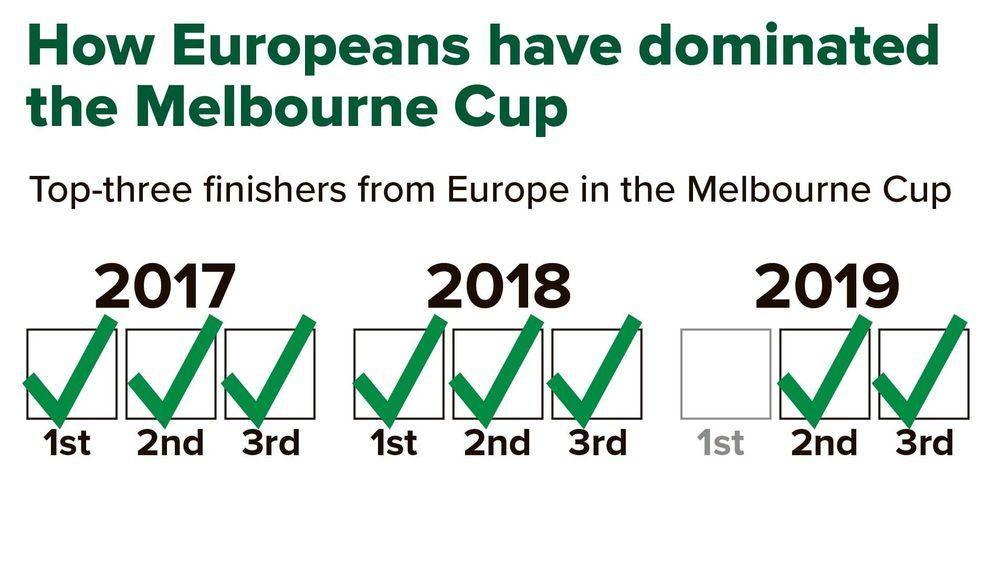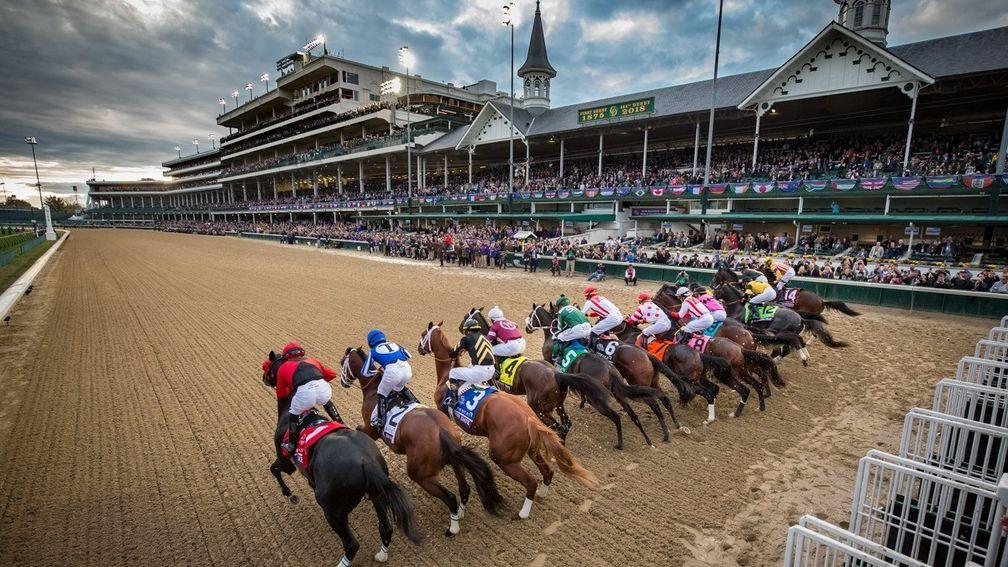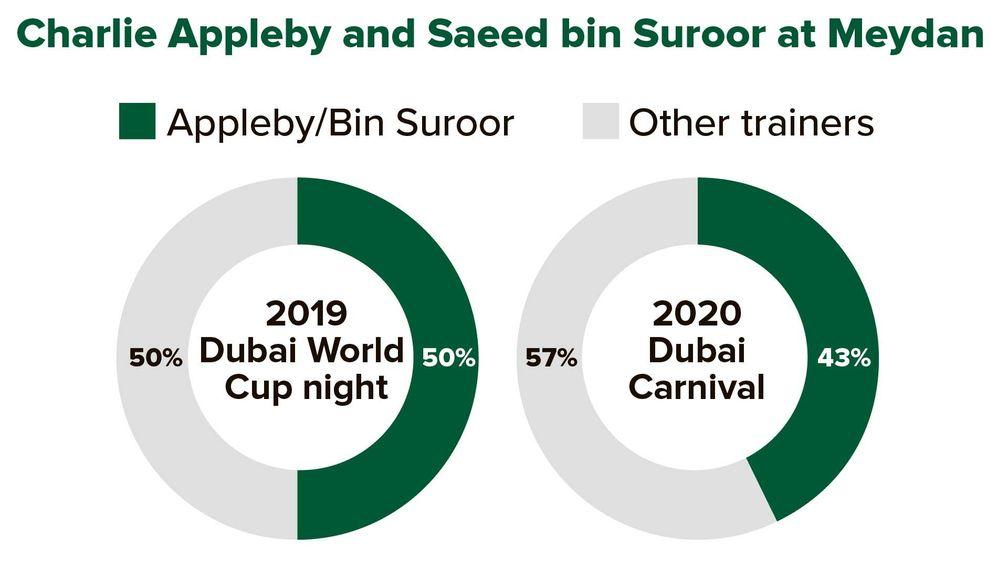Making it pay all over the world: the intricacies of the international scene
Ron Wood examines the opportunities overseas

In any normal year it would be possible to punt on horses all over the world, from Albany in Australia to Zia Park in the US, and in this day and age there's nothing to stop someone reaching expert level on any of the major jurisdictions.
Some guidance specific to different countries is below, but they all have in common the same key factors to consider first.
To kick off, you need to know what the track is like, what the weather is doing, whether there is a bias and so on. It's worth checking the weather a few days out as it can be difficult to get advanced going descriptions in many places.
Get to know the key players. Jockey and trainer stats have their uses but also picking up on their habits is part of the puzzle. For example, knowing what moves the local riders are likely to make in certain race scenarios can help in assessing race dynamics.
When it comes to websites, hopefully you'll be doing most of your studying on racingpost.com, with an ever-increasing number of international cards and results. But there are some useful nuggets to be found elsewhere.
For instance, there's tracking data like Trakus at many courses. Plus, there's often video form on official racing sites or YouTube.
You also need to be aware that there can be a few betting options – bookmakers, exchanges, local pools – so check how and when you'll be able to get on. In some on-course pools, like in the US, there will be 'exotic' betting ranging from a simple exacta to the Pick 6.
Check the bookmakers' small print, though. They will often have different maximum payouts for foreign racing, plus promotions like best-odds guaranteed may not always apply and their disqualification rules might differ from the norm.
Australia
There's action daily, with the season beginning on August 1 and concluding on July 30. It's mainly Flat racing, although there is still a small jumps programme.
The majority of races are on turf and the configuration of the tracks can vary significantly. The going is rated from 1 to 10, with 1 being the fastest/firmest and 10 the most heavy/testing.
They love a carnival in Australia, with the nation's top races featuring among many such events. There are even carnivals within carnivals!
The biggest jamboree of all is the 50-day Melbourne Spring Racing Carnival which features the four-day Melbourne Cup Carnival at Flemington. The Cup itself is on the first Tuesday of November.
Day in, day out, bookies offer fixed-odds and pool betting on a host of tracks and there's also exchange punting.
Long term, there are ante-post markets on all the major races and these can be quite robust books with some firms being well established in Australia.
Winx somewhat ruined the Cox Plate (the premier weight-for-age contest) as a betting medium – certainly the win-only market – when winning the race for four straight years from 2015, going off odds-on for the last three. But the 2019 running went to Lys Gracieux for Japan.

Australia has specialised in fast horses so their top middle-distance and staying races can lack depth, leaving some major prizes open to international challengers who might not be the best in their own – or original – jurisdiction.
Winx, though, was an exception; nothing could lay a glove on her.
Vow And Declare won the 2019 Melbourne Cup for the home team, an extra-special success as he was bred in Australia. However, the next three finishers were European raiders, and in the two years before that runners trained in Europe filled the first three places.
If it's good quality turf racing with an international flavour that you're interested in, then the Australian carnivals can be worth focusing on.
France
In normal circumstances there's racing every day of the year – including Christmas Day – in France and it can be some of the best in the world for Flat and jumps.
The highlight of the jumping calendar is the Grand-Steeplechase de Paris (scheduled for May in 2020) at Auteuil, which hosts all of the country's nine Grade 1 jump races.
The Flat season features a number of top-quality contests, including at a boutique meeting at Deauville in August, and in the Prix de l'Arc de Triomphe France has one of the top turf races in the world.
It's mainly turf racing but there are a number of courses with artificial surfaces.
A good 'in' can be to follow the top juvenile contests and the spring Classic trials, and not necessarily just with a view to racing in France.
The French have enjoyed tremendous success on their travels, including in British and Irish Classics and at the Breeders' Cup. With French races often being run at a steady early pace, turning into a late dash, their horses can have the tactical gears to excel on the tight US circuits.
As well as there being fixed-odds and exchange markets, some firms will facilitate betting into the PMU (Pari Mutuel Urbain), a state-controlled betting system; the local tote, basically.
North America
The 2020 season has been thrown into disarray by the coronavirus, with the Kentucky Derby being moved from its usual slot on the first Saturday in May to the first Saturday in September.
In normal circumstances the 'Road to the Kentucky Derby' – a series of races in which horses compete for points to qualify for the country's most famous race – is an ideal way of keeping up to speed.
With racing almost every day across the country and at a host of tracks, you have to be selective and the idea behind following the Derby hopefuls isn't just about trying to identify the winner of the big one.
Just about everyone who breeds horses in the US dreams of winning the Kentucky Derby, so any runner who has shown enough promise will be given the chance to prove their worth.
That's a lot of horses and only 20 can make it into the gate at Churchill Downs.

Although that's actually the biggest field of any US race, it's not a lot considering how many set out on the Derby path, so having already familiarised yourself with these runners when they turn up elsewhere can be advantageous.
The season runs all year round, taking place on left-handed courses, usually on dirt or turf, although there are still a few synthetic tracks, notably at Woodbine in Canada.
If turf is unraceable, races will often be moved to the dirt (or all-weather), although it's rare for a major race to be switched.
It's almost all Flat racing but there is a small jumps programme. The bulk of US races are claimers, rather than handicaps.
The main tracks stage a series of 'meets', a number of regular fixtures over a set period, and there's something of an east- and west-coast divide.
The highlight of the summer on the east coast is Saratoga in upstate New York, while at the same time on the west coast there's Del Mar in southern California.
When autumn/fall comes around it's time for the Breeders' Cup preps and, if you've already followed the Derby trail (not forgetting the Kentucky Oaks for the fillies), as well as some of the better meets, you'll be well placed.
With the majority of horses trained on the track, most of the workouts are published – and many of them can even be viewed online via xbtv.com. This is a fantastic resource, including interviews with connections, yet it feels like it's still being underused by horse players.
There's betting available on loads of different tracks, with bookies and exchanges, as well as the option of some local pools.
United Arab Emirates
There are five tracks in the UAE – Flat only – with the season running from around October to April, and there's betting available through bookies and exchanges on Jebel Ali and Meydan.
Jebel Ali is quirky: right-handed, with a straight chute and a trademark uphill finish. It can be hard work for horses and punters; some (horses and punters) just don't take to it.
The premier venue is Meydan, which has a big turf course – left-handed and straight – as well as a smaller inner dirt course.
In early January, the Dubai Carnival, which has been going since 2004, signals the start of the international racing calendar.
The Godolphin team is the starting point in the search for winners, with the Saeed bin Suroor-trained Thunder Snow winning the Dubai World Cup for them in 2018 and 2019.

Still, that leaves a chunk of winners to be found elsewhere and Godolphin usually leave the non-carnival races for others.
It often takes a battled-hardened horse to win on the Meydan dirt, a demanding surface with lots of kickback, so locally trained runners can be particularly strong.
The Dubai Racing Channel can be accessed online and their extremely knowledgeable presenters and guests offer key insight, with 'The Winning Line' essential viewing if you're taking this jurisdiction seriously. See @DubaiRacingTV on Twitter for links.
Elsewhere
There are many other places around the globe that punters have access to these days – too many to mention them all – but it's worth touching on a few more.
Bahrain is a region on the rise in the racing world. It staged its first international race in November 2019, and at the inaugural Saudi Cup meeting in February 2020, the feature event of Saudi Arabia's first international raceday, the first two races were won by horses trained in Bahrain – at 40-1 and 66-1.
Japan has some of the best racing in the world including major events like November's Japan Cup. The day-to-day stuff may not be that popular, but some firms do offer prices and more bookies may soon be joining in.
Punters have long had access to racing in South Africa, which can reach a good standard and has produced many star horses on an international stage. Sky Sports Racing often covers it.
In recent years South Korea has got in on the act, staging a couple of international races on their deep sand surface at Seoul in September.
Dirt racing explained
Dirt races tend to be run at fast early/slow late pace scenarios, the complete opposite to all-weather and turf racing, and reliable speed figures are essential in assessing the form.
On that note, check out Daily Racing Form's Beyer figures in the US and our own Topspeed for racing in UAE.
Horses chasing the pace can get taken out of their comfort zone or simply discouraged by kickback, either way not being able to make up ground, so those with early gears are often favoured.
That is unless the leaders completely overdo it or simply don't stay, in which case the 'deep closers' (polite term for the plodders) can come to the fore.
It's essential to always be on the lookout for track biases – that goes for any track but particularly on dirt – and spotting them early can be rewarding.
But even if not cashing in on the day, if you've noted horses impacted by a bias, positively or negatively, the payout may come at a later point.
Dirt surfaces can vary greatly from course to course, and the descriptions can range from fast to sloppy or muddy. A track may be described as 'sealed' if it was packed down before the rain arrived, allowing water to run off it.
The best horses will cope with most conditions on dirt, although they can be undone by the biases.
Ron Wood Q&A
What was your first bet?
I don't remember a specific bet but in my school days I used to give my Mum a list of horses to back on a Saturday. Come to think of it, I don't think my account was ever in credit and I'm not sure I ever settled that bill!
What was your biggest winner?
Justify in the 2018 Kentucky Derby. It's unusual for the Racing Post to carry the result of a seemingly random maiden in the US, but we made an exception for this horse and the first quote was 40-1.
What was your most painful loser?
On the old Champions Day at Newmarket, in 2006, I had a small accumulator on Sleeping Indian (won), Detroit City (won), Pride (won), Teofilo (won), Finsceal Beo (won), Hawridge Prince (won) and . . . Pinson (lost).
What was the best punting advice you ever received?
The best punters I know are extremely meticulous; reading, listening, watching and just generally studying as much as they can. It's a lesson seeing such attention to detail, cutting out the guesswork as much as possible.
Graham Cunningham on Hong Kong
Outline the golden rules of Hong Kong racing and how to make money on it. The brief from the Racing Post's premium editor Dylan Hill was simple enough – as is the golden rule.
Whether you are in Wan Chai or Wandsworth, the secret to winning at Sha Tin and Happy Valley lies in backing horses whose chances are greater than the odds available.
But that's where two worlds can collide. British and Irish punters reared on a rich diet of competing sports books with assorted concessions can baulk at the notion of taking on a Tote system that holds 17.5 per cent of each main pool with no ability to lock in a price.
Likewise, hardened HK devotees find precious little appeal in an old-school menu dangling value in one hand and restrictions in the other if you have the temerity to beat the house.
But if three years in HK have taught this low roller anything it is that the wider world's punting palate craves something much more exotic than meat and one veg win and place markets.
And nailing the exotics – headed by the Quinella, Quinella Place (QP), Tierce and Trio – is crucial for anyone aiming to succeed in one of the most competitive racing arenas on the planet.
To clarify, the Quinella is the first two home in either order and is HK's most popular bet; the QP is two to finish in the first three; the Tierce is the first three in correct order; and the Trio is the first three in any order.
Fuelled by a breadth of accurate data that remains a pipedream for most European punters – sectional times, body weights, trackwork and vet records – Hong Kong betting markets pinpoint leading players with high efficiency.
Market leaders salute at just over 30 per cent, while the place strike-rate for jollies nudges two in three. That's a high clip in a culture of 12- and 14-runner handicaps but following favourites, especially those ridden by Joao Moreira and Zac Purton, is a recipe for a steady supply of winners and even steadier bankroll erosion.
The key to profit lies in having the right names on your slip when favourites falter and finding those names starts with assessing the way each individual race will develop.
Pace and position are fundamentals of HK racing's closely knit handicap system. A soft lead is worth its weight in gold, a strong pace generally sets things up for finishers, and riders who get caught three wide with no cover soon find their ears burning.
As with any racing system, the only way to get a true feel for tactical nuance is to put in the work. The rewards are there for those who do so most efficiently, but how about a few pointers for those who don't take pace maps to bed?
An expansive mindset rates high on the list. Casting wide to perm four or more horses in a race doesn't come naturally to most Euro punters but going deep is essential if you want to land the odd whopper and finding the right longshot turns a decent ticket into a dream ticket.
Logic suggests that if Moreira and Purton are overbet then there must be mileage in noting some of their rivals. Up-and-coming South African Grant Van Niekerk performs strongly compared to market expectations, while the focus on star imports leads to homegrown riders like Matthew Poon and Matthew Chadwick hitting the board at big prices in a way that can be very rewarding.

Trainer changes are another useful angle. The fact that HK switches generally involve moving just a few metres along the Sha Tin shedrow shows a new trainer is far more important than a so-called 'change of scenery', and Tony Millard and Caspar Fownes are highly adept at reviving ailing causes.
Last but not least, HK's markets are unusual in that strong punting edges can arise in the highest-profile races.
One horse generally emerges as a strong favourite even when all evidence suggests there is nothing between key players, while a tendency to underestimate the depth of Japanese racing reared its head on HKIR day last December when Glory Vase, Admire Mars and Win Bright captured Group 1 prizes at 7-1, 26-1 and 9-2.
International commingling now accounts for up to 20 per cent of HK turnover and Jockey Club CEO Winfried Engelbrecht-Bresges describes its continued growth as "a golden opportunity to harvest the full potential of global racing".
The range of betting options can seem bewildering but, with Dubai and several other high-profile destinations set to join Royal Ascot on the World Pool rota, punters all over the world can either stick with their traditional menu or opt for something spicier.
To bend a phrase Hong Kongers are extremely familiar with, it's essentially a case of two countries, two systems. But those who play the HK markets seriously rise or fall by their ability to price a race accurately and their willingness to swim against the tide of market opinion.
And, when you look at it that way, maybe the two systems aren’t that different after all.
Read more from our Betting Masterclasses series:
Free: Making it pay all over the world: the intricacies of the international scene
It's all in the breeding: the most underrated weapon in a punter's armoury
A winning system: using data to your advantage in the battle with the bookies
Still great value on the exchanges - you just might have to work a bit harder
James Willoughby: why speed is of the essence when rating horses
Betting for a living: a pro punter's insight on how to make gambling pay
Why there's never been a better time to be a serious student of the form book
Members can read the latest exclusive interviews, news analysis and comment available from 6pm daily on racingpost.com
Published on 20 July 2021inBetting Masterclasses
Last updated 15:56, 20 July 2021
- Long-range punting: how to make the most of the odds on offer months in advance
- A numbers game: how to use Racing Post Ratings to improve your betting
- It's all in the breeding: the most underrated weapon in a punter's armoury
- Why the all-weather is the perfect betting medium for the discerning punter
- Four experts on the art of being selective when it comes to betting
- Long-range punting: how to make the most of the odds on offer months in advance
- A numbers game: how to use Racing Post Ratings to improve your betting
- It's all in the breeding: the most underrated weapon in a punter's armoury
- Why the all-weather is the perfect betting medium for the discerning punter
- Four experts on the art of being selective when it comes to betting